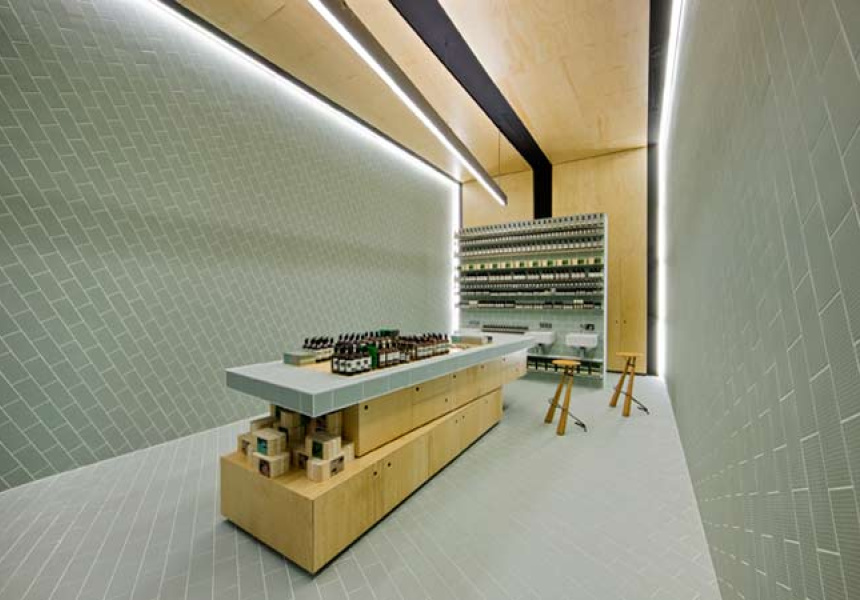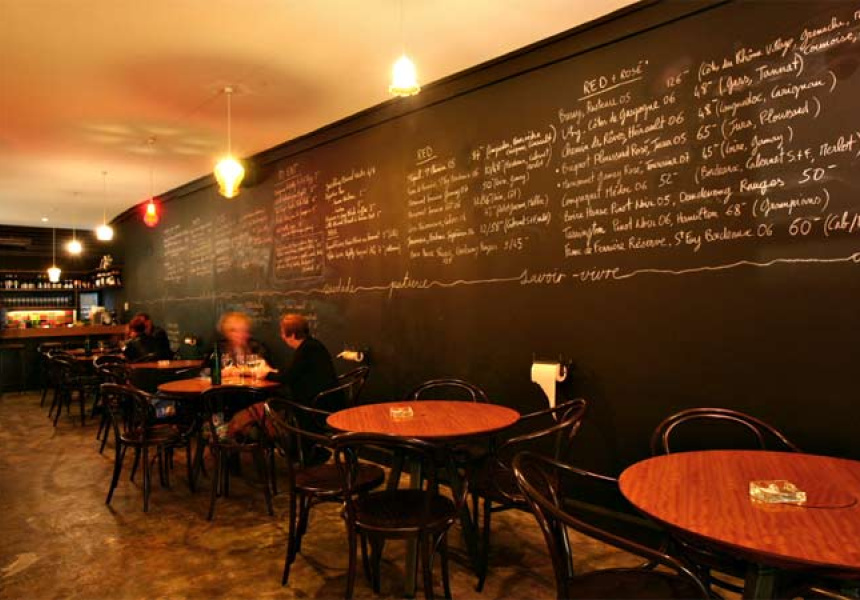Russell & George is a design studio based in Windsor. Producing innovative work across various fields from architecture to graphic design and interiors for some of our favourite retail and restaurant spaces including Aesop, St Jude’s Cellars, Huxtable, Boire and currently Attica. Broadsheet speaks to director Ryan Russell about the studio’s projects, aesthetic and approach to design.
LG: Can you tell us about your studio, Russell & George, and the projects the studio is currently working on that excite you?
RR: Russell & George was formed in April this year after much debate between Byron George and myself. It was formed based on the fact that Byron and I were effectively sharing a studio together, collaborating on projects but also in direct competition with one another.
Never miss a Melbourne moment. Make sure you're subscribed to our newsletter today.
SUBSCRIBE NOWCurrently we have between 80-90 active projects all in various stages, ranging across the fields of industrial design, interiors, architecture, set design, branding and also graphic design. I guess the projects that we are most excited about are the architectural ones in North Fitzroy and Yarraville as well as our continued working relationship with Aesop, Thurley and the rebranding of Review. We also do some work with the National Trust and their Mulberry Hill property, which is a really intriguing heritage project that has allowed us to create new contemporary insertions.
You talk about your studio’s multidisciplinary work – do you take a fundamentally similar approach to designing across these fields or is it quite disparate?
The multidisciplinary side of the business was something that we wanted from the beginning and we feel that our work is intertwined with no in-house style.
I think the design approach across fields is cross-pollinating and we tend to think rather abstractly towards it – we don’t tend to look to other architects for inspiration but rather outside the field. We’ve been criticised quite a bit, especially in the retail design sector, because we try quite earnestly never to follow a trend. As a studio we don’t believe in trends. As far as a design is concerned it’s a unique set of circumstances for a unique client, designed by a unique individual and from that you can create something beautiful if there’s focus and design clarity from the outset.
In terms of Russell & George’s retail interiors, your work on the Aesop Doncaster store – which you won an IDEA award for – exhibits a sense of elegance and high-end design detail. Aesthetically are there certain visual markers in your work?
It’s really governed by a number of factors that are completely separate to the design – budgets, timelines – which are also inherently required to achieve a design outcome.
A design idea needs to be robust enough to a) communicate what the client wants to achieve and b) stand up against the gamut of circumstances put up for it not to succeed. When I was with Cox and Woods Bagot, I learnt that if the design idea can last the entire construction process and the occupation process you generally end up with a good outcome. If it doesn’t, it becomes watered down through the process itself and will shift into something that is often quite problematic.
Your studio has also worked on a number of restaurant interiors – St Jude’s Cellar, Huxtable, Boire and currently a refurbishment of Attica? Is there a confluence of ideas when working with food interiors against retail and architecture?
Our food clients have mostly come through personal contacts and long friendships that we’ve had with people passionate about food and wine.
Byron worked with some of the top Melbourne-based chefs, sommeliers and front of house staff while he was studying, which allowed him to generate his own ideas towards experiential dining. He has an inherent knowledge about the industry – the way a kitchen operates and how people want to feel in a dining space. We have a saying that wherever possible there is never to be an abandoned table; abandoned meaning a table that sits in a middle of a space with circulation paths on all four sides. These tables are not comfortable places to eat.



